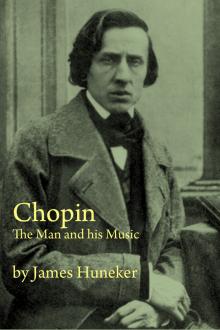Haydn, J. Cuthbert Hadden [books for new readers .TXT] 📗

- Author: J. Cuthbert Hadden
Book online «Haydn, J. Cuthbert Hadden [books for new readers .TXT] 📗». Author J. Cuthbert Hadden
The Last Public Appearance
Once only was he drawn from his seclusion. This was on the 27th of March 1808, when he appeared in public for the last time at a performance of "The Creation" at the University. The scene on this remarkable occasion has been described by many pens. Naumann, writing of it, says that "such an apotheosis of the master was witnessed as has but few parallels," and this is no exaggeration. The performance, which was under the direction of Salieri, had been arranged in honour of his approaching seventy-sixth birthday. All the great artists of Vienna were present, among them Beethoven and Hummel. Prince Esterhazy had sent his carriage to bring the veteran to the hall, and, as he was being conveyed in an arm-chair to a place among the princes and nobles, the whole audience rose to their feet in testimony of their regard. It was a cold night, and ladies sitting near swathed him in their costly wraps and lace shawls. The concert began, and the audience was hushed to silence. When that magnificent passage was reached, "And there was light," they burst into loud applause, and Haydn, overcome with excitement, exclaimed, "Not I, but a Power from above created that." The performance went on, but it proved too much for the old man, and friends arranged to take him home at the end of the first part. As he was being carried out, some of the highest of the land crowded round to take what was felt to be a last farewell; and Beethoven, forgetting incidents of early days, bent down and fervently kissed his hand and forehead. Having reached the door, Haydn asked his bearers to pause and turn him towards the orchestra. Then, lifting his hand, as if in the act of blessing, he was borne out into the night.
Next year Vienna was bombarded by the French, and a cannon-ball fell not far from Haydn's house. He was naturally much alarmed; but there is no ground for the statement, sometimes made, that his death was hastened by the fright. On the contrary, he called out to his servants, who were assisting him to dress: "Children, don't be frightened; no harm can happen to you while Haydn is here."
The End
But his days were numbered. "This miserable war has cast me down to the very ground," he would say, with tears in his eyes. And yet it was a French officer who last visited him on his death-bed, the city being then actually occupied by the enemy. The officer's name is not given, but he sang "In native worth" with such expression that Haydn was quite overcome, and embraced him warmly at parting. On May 26 he seems to have felt that his end was fast approaching. He gathered his household around him, and, being carried to the piano, at his own special request, played the Emperor's Hymn three times over, with an emotion that fairly overpowered himself and all who heard him. Five days later, on the 31st of May 1809, he breathed his last.
Funeral services were held in all the churches, and on June 15 Mozart's Requiem was given in his honour at the Scots Church, when several generals and administrators of the French army were present. Many poems were also written in his praise.
Haydn was buried as a private individual in the Hundsthurm Churchyard, which was just outside the lines, and close to the suburb of Gumpendorf, where he had lived. The grave remained entirely undistinguished till 1814--another instance of Vienna's neglect--when Haydn's pupil, Chevalier Neukomm, erected a stone bearing the following inscription, which contains a five-part canon for solution:
HAYDN
NATUS MDCCXXXIII. OBIIT MDCCCIX.
CAN. AENIGM. QUINQUE. VOC.
[figure: a musical score excerpt to the syllables non om - nis mo - ri - ar]
D. D.Discp. Eius Neukom Vindob. Redux. Mdcccxiv.
Desecration of Haydn's Remains
In 1820 the remains were exhumed by order of Prince Esterhazy, and re-interred with fresh funeral honours in the Pilgrimage Church of Maria-Einsiedel, near Eisenstadt, on November 7. A simple stone, with a Latin inscription, is inserted in the wall over the vault. When the coffin was opened, the startling discovery was made that the skull had been stolen. The desecration took place two days after the funeral. It appears that one Johann Peter, intendant of the royal and imperial prisons of Vienna, conceived the grim idea of forming a collection of skulls, made, as he avowed in his will, to corroborate the theory of Dr Gall, the founder of phrenology. This functionary bribed the sexton, and--in concert with Prince Esterhazy's secretary Rosenbaum, and with two Government officials named Jungermann and Ullmann--he opened Haydn's grave and removed the skull. Peter afterwards gave the most minute details of the sacrilege. He declared that he examined the head and found the bump of music fully developed, and traces in the nose of the polypus from which Haydn suffered. The skull was placed in a lined box, and when Peter got into difficulties and his collection was dispersed, the relic passed into the possession of Rosenbaum. That worthy's conscience seems to have troubled him in the matter, for he conceived the idea of erecting a monument to the skull in his back garden! When the desecration was discovered in 1820 there was an outcry, followed by police search. Prince Esterhazy would stand no nonsense. The skull must be returned, no questions would be asked, and Peter was offered a reward if he found it. The notion then occurred to Rosenbaum of palming off another skull for Haydn's. This he actually succeeded in doing, the head of some unfortunate individual being handed to the police. Peter claimed the reward, which was very justly refused him. When Rosenbaum was dying he confessed to the deception, and gave the skull back to Peter. Peter formed the resolution of bequeathing it, by will, to the Conservatorium at Vienna; but he altered his mind before he died, and by codicil left the skull to Dr Haller, from whose keeping it ultimately found its way to the anatomical museum at Vienna. We believe it is still in the museum. Its proper place is, of course, in Haydn's grave, and a stigma will rest on Vienna until it is placed there.
[The great masters have been peculiarly unfortunate in the matter of their "remains." When Beethoven's grave was opened in 1863, Professor Wagner was actually allowed to cut off the ears and aural cavities of the corpse in order to investigate the cause of the dead man's deafness. The alleged skeleton of Sebastian Bach was taken to an anatomical museum a few years ago, "cleaned up," and clothed with a semblance of flesh to show how Bach looked in life! Donizetti's skull was stolen before the funeral, and was afterwards sold to a pork butcher, who used it as a money-bowl. Gluck was re-buried in 1890 beside Mozart, Beethoven and Schubert, after having lain in the little suburban churchyard of Matzleinsdorf since 1787.]
A copy of Haydn's will has been printed as one of the appendices to the present volume, with notes and all necessary information about the interesting document. Two years before his death he had arranged that his books, music, manuscripts and medals should become the property of the Esterhazy family. Among the relics were twenty-four canons which had hung, framed and glazed, in his bedroom. "I am not rich enough," he said, "to buy good pictures, so I have provided myself with hangings of a kind that few possess." These little compositions were the subject of an oft-quoted anecdote. His wife, in one of her peevish moods, was complaining that if he should die suddenly, there was not sufficient money in the house to bury him. "In case such a calamity should occur," he replied, "take these canons to the music-publisher. I will answer for it, that they will bring enough to pay for a decent funeral."
CHAPTER IX(HAYDN: THE MAN)
Face and Features--Portraits--Social Habits--Partial to Pretty Women--His Letters--His Humour--His Generosity--Unspoiled by Success--His Piety--His Industry--Habits of Composition-- Impatient of Pedantry.
Face and Features
Something of Haydn's person and character will have already been gathered from the foregoing pages. He considered himself an ugly man, and, in Addison's words, thought that the best expedient was "to be pleasant upon himself." His face was deeply pitted with small-pox, and the nose, large and aquiline, was disfigured by the polypus which he had inherited from his mother. In complexion he was so dark as to have earned in some quarters the familiar nickname of "The Moor." His underlip was thick and hanging, his jaw massive. "The mouth and chin are Philistine," wrote Lavater under his silhouette, noting, at the same time, "something out of the common in the eyes and the nose." The eyes were dark gray. They are described as "beaming with benevolence," and he used to say himself: "Anyone can see by the look of me that I am a good-natured sort of fellow."
In stature he was rather under the middle height, with legs disproportionately short, a defect rendered more noticeable by the style of his dress, which he refused to change with the changes of fashion. Dies writes: "His features were regular, his expression animated, yet, at the same time, temperate, gentle and attractive. His face wore a stern look when in repose, but in conversation it was smiling and cheerful. I never heard him laugh out loud. His build was substantial, but deficient in muscle." Another of his acquaintances says that "notwithstanding a cast of physiognomy rather morose, and a short way of expressing himself, which seemed to indicate an ill-tempered man, the character of Haydn was gay, open and humorous." From these testimonies we get the impression of a rather unusual combination of the attractive and the repulsive, the intellectual and the vulgar. What Lavater described as the "lofty and good" brow was partly concealed by a wig, with side curls, and a pig-tail, which he wore to the last. His dress as a private individual has not been described in detail, but the Esterhazy uniform, though frequently changing in colour and style, showed him in knee-breeches, white stockings, lace ruffles and white neckcloth. This uniform he never wore except when on actual duty.
Portraits
After his death there were many portraits in chalks, engraved, and modeled in wax. Notwithstanding his admission of the lack of personal graces, he had a sort of feminine objection to an artist making him look old. We read that, in 1800, he was "seriously angry" with a painter who had represented him as he then appeared. "If I was Haydn at forty," said he, "why should you transmit to posterity a Haydn of seventy-eight?" Several writers mention a portrait by Sir Joshua Reynolds, and even give details of the sittings, but he never sat to Reynolds, whose eyesight had begun to fail before





Comments (0)